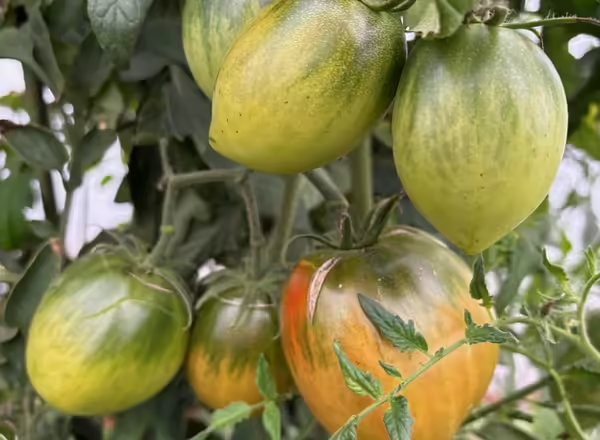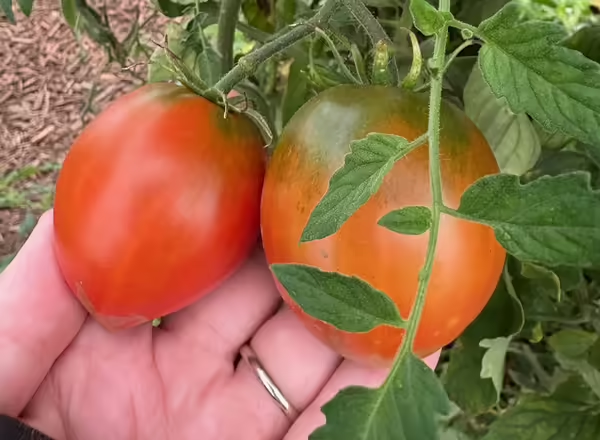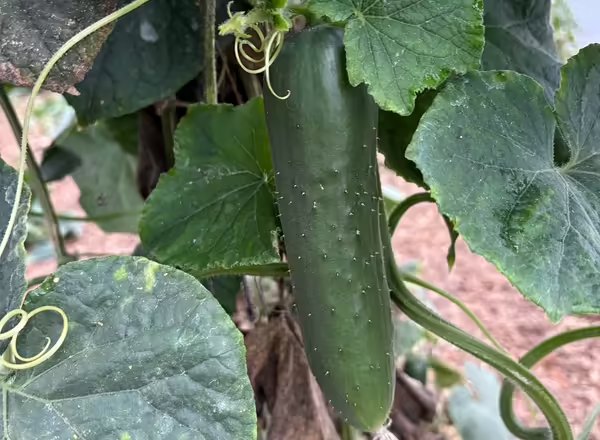
This October has brought excellent apple harvests across many Northern Illinois orchards, with a mix of traditional, PRI, and MAIA varieties showing strong performance. I visited several orchards this past month and saw healthy crops and steady visitor turnout. Post-harvest fruit quality has varied among varieties, likely influenced by factors such as this season’s drought stress, growing conditions, and even spring pollination issues.
Most apple varieties have been maturing one to two weeks earlier than usual. ‘EverCrisp’—a late-season MAIA apple known for its excellent storage quality—was being harvested by mid-October. This ‘Fuji’ × ‘Honeycrisp’ cross continues to gain popularity among northern Illinois growers, though its timing can sometimes fall just after the peak orchard season. ‘Pink Lady’ was also being picked around this time, while some orchards still had ‘Honeycrisp’ available in storage. The early ripening of ‘EverCrisp’ and other varieties this year has aligned well with orchard closing dates, with some planning their final weekend of sales around October 25 before wrapping up by November 1. While last weekend’s rain may have slowed orchard traffic, this coming weekend looks ideal—cool, dry, and perfect for fall visits.
Apples and pumpkins often share space on the same farms, and this weekend marks the final push for Halloween pumpkin sales before demand drops off next week. One interesting trend I have seen is more farms selling pumpkins by size instead of weight. This pricing approach helps customers avoid sticker shock at checkout when large pumpkins end up costing more than expected. Some growers have developed creative signage and tiered pricing displays to make pricing clearer in the field.
In several pumpkin patches, I’ve also seen signs of late-season disease pressure, including soilborne diseases. As you assess your season and plan next year’s crop rotations—or alternatives if rotation isn’t possible—consider reviewing disease-resistant cucurbit varieties. Cornell University offers an excellent resource on disease-resistant cucurbits, which can be a valuable reference for managing future pumpkin production.
Fruit Tree Pruning Fundamentals Course, November and December
As I shared in last month’s newsletter, I’m pleased to share that I’ll be holding Fruit Tree Pruning Fundamentals on Saturdays from 10-12PM in the following counties:
November 15: Elizabeth (Jo Daviess County)
November 22: Freeport (Stephenson County)
December 6: Rockford (Winnebago County)
While trees haven’t entered dormancy and pruning should not be done, I’m offering this course during this period as preparation for pruning this winter. The course does lean towards small, beginning growers at a commercial and noncommercial scale though a good refresher and valuable if you have any workers that will be working with you this upcoming season.
The online version is on Wednesday, December 17 at 7PM. Register here.
New course: Illinois Beginning Orchard Academy (IBOA)
I’m leading the Illinois Beginning Orchard Academy (IBOA)—a six-week, live online course for anyone interested in starting a fruit orchard or improving small scale apple, pear, or peach trees. You’ll learn how to plan your site, choose the best fruit tree varieties for Illinois, manage pests, and keep trees productive year after year. Marketing will be covered throughout.
Classes run February–April 2026 on Zoom, and recordings are included. Registration closes February 13, 2026—don’t miss your chance to grow better fruit!
Freeport High School Research Update
High tunnel research at Freeport High School on tomatoes and cucumbers has continued steadily through October. The mild fall weather this month has truly extended the growing season, supporting ongoing high tunnel vegetable production in northern Illinois. This extended season has benefited sales through farmers markets, the on-site market stand, and local CSA programs. It has also enabled donations of surplus produce to nearby food pantries, reinforcing the program’s community impact.
Tomato harvest began later than anticipated this year, and some fruit have shown catfacing, likely due to environmental stress during flower development. Despite that, yields have remained strong, and fruit quality overall has been good.
Cucumbers, however, are beginning to wind down. As of October 24, vines have started showing signs of season decline. With a hard freeze on the night of October 23 into the morning of October 24, even with high tunnel protection, we expect production to wrap up by mid-November—or possibly sooner depending on upcoming temperatures.


